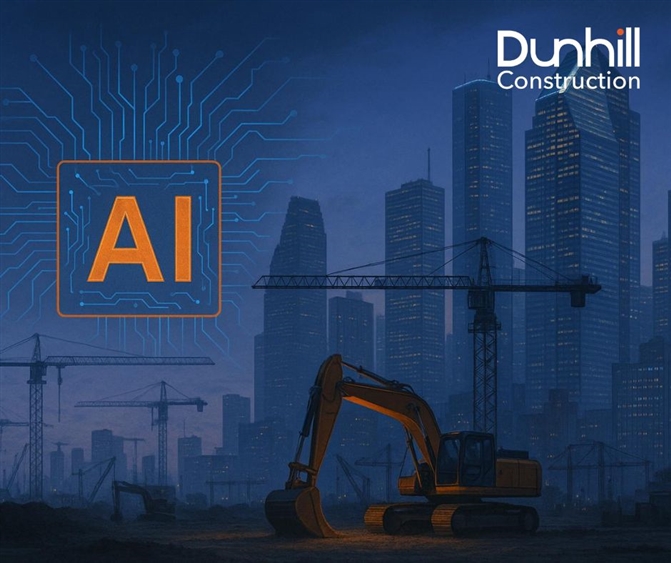Adapting to Artificial Intelligence & Construction
April 25, 2025

Adapting to Artificial Intelligence: A Strategic Imperative for Business and the Construction Industry
The rise of artificial intelligence is not a distant possibility, it is a present-day reality that is rapidly reshaping the global business landscape. Organizations across sectors are re-evaluating how they operate, make decisions, and deliver value. Those who adapt stand to gain a significant competitive advantage. Those who resist may risk falling behind.
Nowhere is this transformation more urgently needed, and perhaps more overdue, than in the construction industry.
Across business functions, AI is demonstrating its ability to enhance efficiency, reduce risk, and improve decision-making. From financial forecasting to customer engagement, AI is enabling leaders to do more with less, faster, more accurately, and with greater insight. It’s no longer just about digitization or automation. It’s about intelligent systems that learn, adapt, and continuously improve.
In construction, the opportunities are just as significant, if not more so.
An industry historically known for tight margins, unpredictable schedules, and high levels of risk can benefit immensely from intelligent systems that bring order to complexity. Consider the following applications:
• Predictive analytics that anticipate schedule delays, labor shortages, or cost overruns based on historical data
• AI-enhanced safety tools that monitor sites in real-time and proactively identify potential hazards
• Generative design that explores thousands of iterations in seconds, optimizing for code, cost, and constructability
• Smart bidding and estimating tools that draw on data from past projects to increase accuracy and reduce human error
• Autonomous equipment and robotics that support workforce shortages and improve consistency in repetitive tasks
These technologies are not theoretical. They are real, available, and being implemented today by construction firms seeking a more agile and resilient model.
Yet, many firms remain hesitant to adopt them being concerned about cost, disruption, or cultural resistance. While these concerns are understandable, they should not be paralyzing. The truth is that AI is not replacing the construction workforce, but it is augmenting it. It allows superintendents to spend less time on administrative tasks and more time leading in the field. It helps project managers make informed decisions faster. It supports office and field teams alike with tools that reduce errors and maximize output.
Early adopters are already seeing measurable ROI in the form of shorter schedules, fewer change orders, lower rework rates, and stronger client satisfaction.
The key to successful integration lies in approach:
• Start with a pilot initiative in a high-impact area
• Invest in training and internal champions who can bridge technology and field operations
• Foster a culture of learning and adaptability rather than fear of obsolescence
• Choose technology partners who understand the unique demands of construction environments
Adopting AI is not about chasing trends. It is about building a more intelligent, efficient, and competitive organization. One that is prepared to meet the evolving demands of clients, regulators, and the market.
As we look ahead, it is clear that artificial intelligence will not merely influence the future of construction... it will define it. The firms that embrace this shift will lead. The ones that hesitate may struggle to keep pace.
Now is the time to act, not react. The foundations we lay today will determine the industry’s trajectory for decades to come.